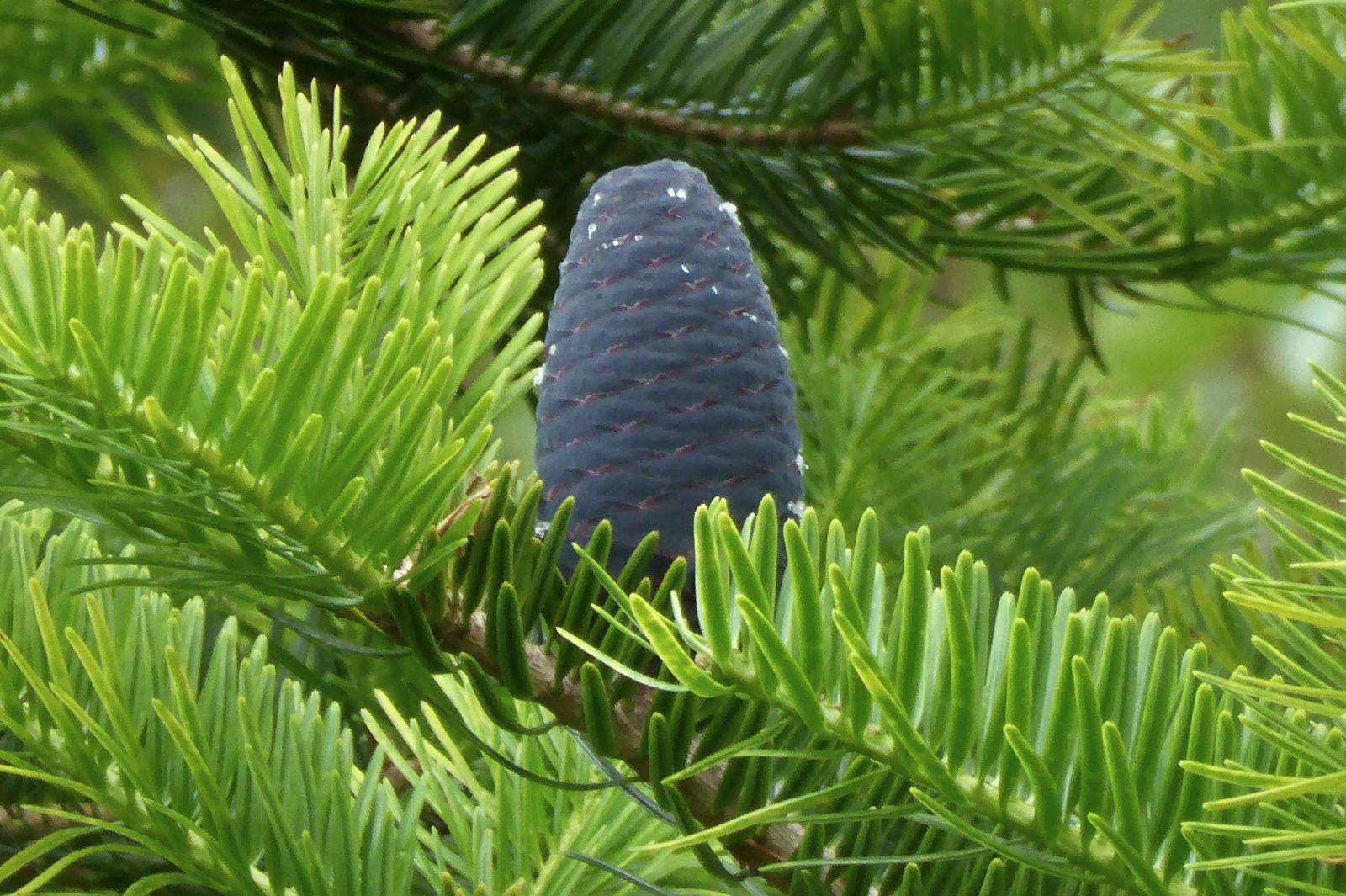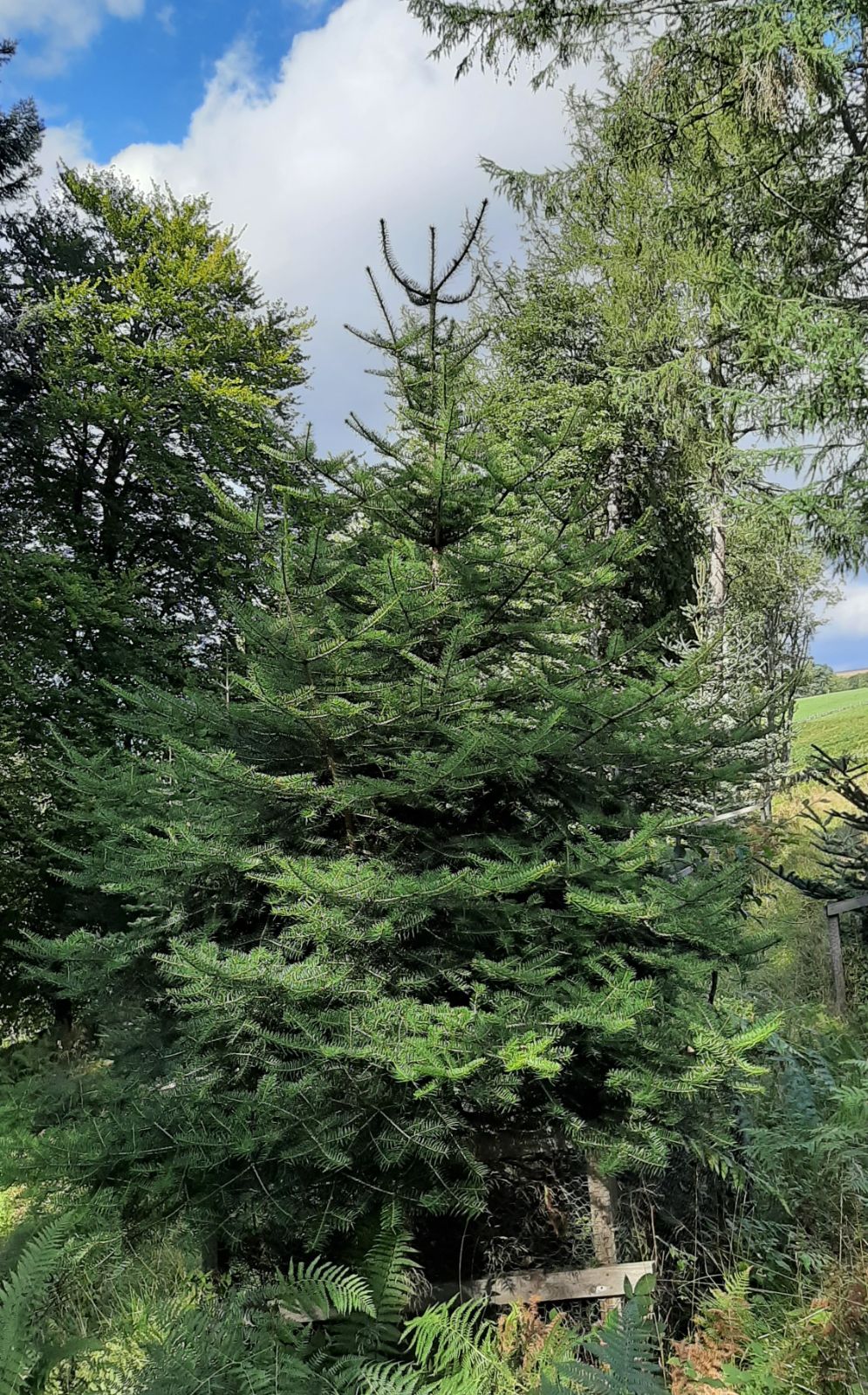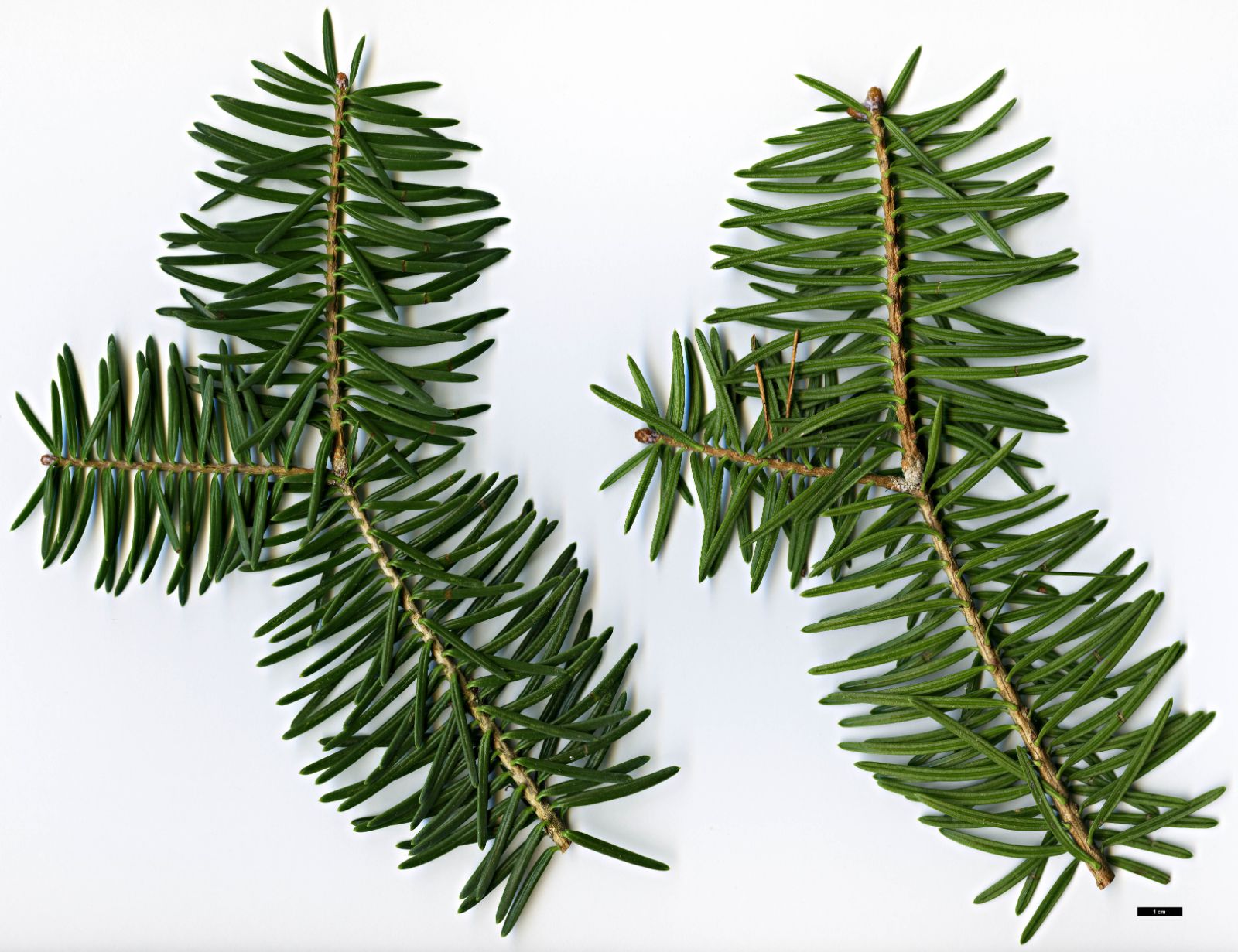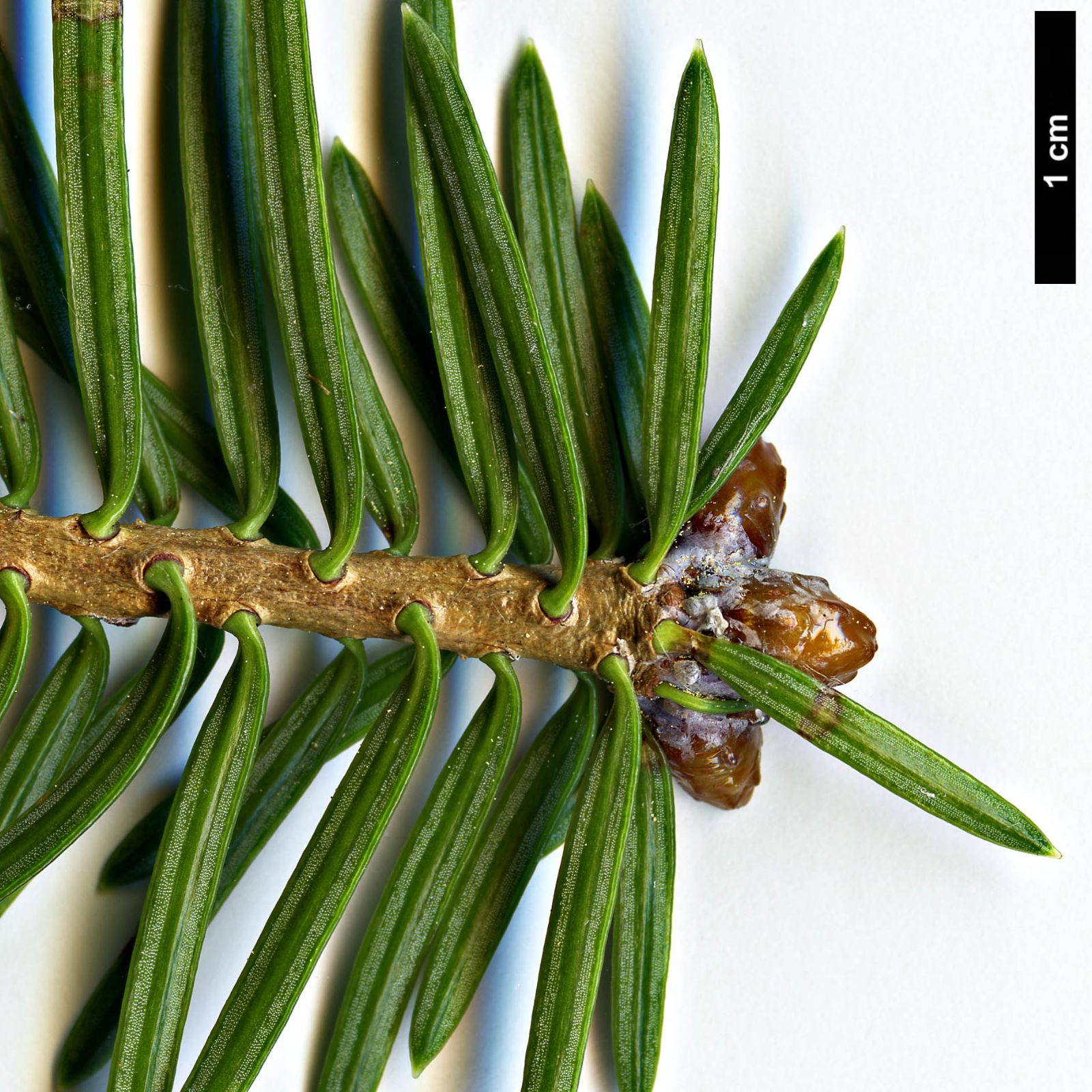Abies ernestii
Sponsor
Kindly sponsored by
Sir Henry Angest
Credits
Tom Christian (2021)
Recommended citation
Christian, T. (2021), 'Abies ernestii' from the website Trees and Shrubs Online (treesandshrubsonline.
Genus
Common Names
- Western River Fir
- Western Giant Fir
- Ernest Fir
- Huangguo Lengshan
Synonyms
- Abies recurvata var. ernestii (Rehder) C.T. Kuan
- Abies chensiensis var. ernestii (Rehder) T.S. Liu
- Abies beissneriana Rehder & Wilson
Other taxa in genus
- Abies alba
- Abies amabilis
- Abies × arnoldiana
- Abies balsamea
- Abies beshanzuensis
- Abies borisii-regis
- Abies bracteata
- Abies cephalonica
- Abies × chengii
- Abies chensiensis
- Abies cilicica
- Abies colimensis
- Abies concolor
- Abies delavayi
- Abies densa
- Abies durangensis
- Abies fabri
- Abies fanjingshanensis
- Abies fansipanensis
- Abies fargesii
- Abies ferreana
- Abies firma
- Abies flinckii
- Abies fordei
- Abies forrestii
- Abies forrestii agg. × homolepis
- Abies fraseri
- Abies gamblei
- Abies georgei
- Abies gracilis
- Abies grandis
- Abies guatemalensis
- Abies hickelii
- Abies holophylla
- Abies homolepis
- Abies in Mexico and Mesoamerica
- Abies in the Sino-Himalaya
- Abies × insignis
- Abies kawakamii
- Abies koreana
- Abies koreana Hybrids
- Abies lasiocarpa
- Abies magnifica
- Abies mariesii
- Abies nebrodensis
- Abies nephrolepis
- Abies nordmanniana
- Abies nukiangensis
- Abies numidica
- Abies pindrow
- Abies pinsapo
- Abies procera
- Abies recurvata
- Abies religiosa
- Abies sachalinensis
- Abies salouenensis
- Abies sibirica
- Abies spectabilis
- Abies squamata
- Abies × umbellata
- Abies veitchii
- Abies vejarii
- Abies × vilmorinii
- Abies yuanbaoshanensis
- Abies ziyuanensis
Tree to 60 m × 1.5(–2) m dbh. Crown pyrmidal (broadly so in open grown trees), becoming columnar and flat-topped with age. Bark of young trees smooth at first, dark grey, devloping shallow longitudinal fissures and flaking with age. First order branches thick and spreading, often with the ends upcurved on young or vigorous trees. Branchlets firm, shining yellowish- or whitish-grey at first, more or less glabrous, dull and scaly by the third year. Vegetative buds ovoid, resinous, to c. 8 × 6 mm, largest on leading shoots, slightly resinous, pale chestnut brown. Leaves pectinately arranged, those of the lower ranks more or less perpendicular to the shoot, somewhat downcurved and conspicuously longer than those of the upper ranks which are often strongly forwards, (1–)2–3.5(–7) cm long, always shortest near the tip of leading shoots; base somewhat twisted, apex deeply emarginate or bifid on sterile shoots; bright green above, grey-green below with pale stomatal bands. Pollen cones 1–1.5 cm long with reddish microsporophylls. Seed cones short-pedunculate, cylindrical-ovoid, apex rounded or weakly truncate, often umbilicate, (4–)5–9(–10) cm × 2.5–3.5 cm, violet-purple when immature, ripening grey-purple-brown; rachis fusiform; bracts included at maturity. (Farjon 2017; Debreczy & Rácz 2011; Fu, Li & Mill 1999).
Distribution China SW Gansu, W Hubei, N and W Sichuan, E Xizang (Tibet), ?NW Yunnan
Habitat River valleys and gorges in mountains, 2500–3800 m asl, usually in mixed forests with an extensive range of broadleaf associates. Toward its upper limit it grows with Abies fargesii and Larix potaninii.
USDA Hardiness Zone 6
RHS Hardiness Rating H7
Taxonomic note Abies ernestii belongs to that group of closely related firs affiliated with A. chensiensis. Their distinctiveness has been amply demonstrated (e.g. Shao et al. 2020; Rushforth 1984) but they continue to be subject to significant divergencies in taxonomic treatment. Here we have elected to treat them in the simplest possible way, as distinct but closely related species: A. chensiensis, A. ernestii, A. recurvata, and A. salouenensis. See ‘Abies chensiensis and its relatives’ for further discussion.
Abies ernestii was introduced to cultivation in 1903 when Wilson sent material from western Sichuan (herbarium specimens as W 3020, seed as W 1570). Based on this gathering Rehder described a new species, A. beissneriana, but as this was shown to be illegitimate he later substituted the name A. ernestii. Following its introduction it was compared with A. firma of Japan, and it has since been treated as a variety of both A. chensiensis and A. recurvata, the latter placement being most common in western treatments after Rushforth (1984) showed that A. ernestii and A. recurvata are very closely related (Rushforth 1984; Rushforth 1999). The most reliable means of separating them are: the longer leaves in A. ernestii; the notched or bifid apex (on sterile shoots) of A. ernestii (cf. acute or rounded or weakly emarginate); the shoots of A. ernestii more yellowish-brown in their first year, lacking the pinkish tinge typical of A. recurvata which they develop later (Fu, Li & Mill 1999; Rushforth 1984).
In the wild it appears to be a southern vicariant of A. recurvata, but its true extent of occurrence is not fully understood, nor is the nature of the interface between the two. Based on herbarium specimens its area of distribution was traditionally considered restricted to western Sichuan, from Baoxing County to Mowkung, west of Chengdu, and also in south west Gansu (Rushforth 1984). More recent explorations have extended its accepted range to include western Hubei, eastern Xizang (Tibet), and possibly north west Yunnan (Debreczy & Rácz 2011; Fu, Li & Mill 1999).
Wilson encountered A. ernestii in 1907, in Tapao Shan in west Sichuan. Bean (1976) suggests this resulted in living plants which would have been introduced as A. chensiensis, though he does not cite any collection numbers. Further material was introduced through the early 20th century: ‘Plants sent out by Messrs Hillier around 1940 are almost certainly from seed distributed by the Sun Yat Sen University’ (Bean 1976). In the 1980s the Chinese Academy of Forestry sent out seed from Emei Shan in west Sichuan under the name A. fabri. Nobody had any reason to question this identity for the famous mountain is inextricably linked with A. fabri, which grows there above c. 2000 m. Nevertheless, plants raised from this batch growing in several UK collections are clearly not A. fabri and better fit A. ernestii (K. Rushforth pers. comm. 2020). The most obvious explanation is a mix up before the seed left China, but another possibility is that it was collected in the vicinity of Emei Shan, at a lower altitude below the zone of A. fabri. Several other 1980s dispatches from the Academy, and from commercial Chinese seed merchants, were well distributed; extant trees traceable to these distributions may be found, often with only scant records, in collections on both sides of the North Atlantic. Some of these distributions were correctly labelled A. ernestii (or some variation thereof) but one of the earliest arrived as A. squamata – an error that has doubtless caused greater disappointment among curators than any other. More recently, two collections have been made from Muli County in Sichuan which also fit A. ernestii. These are SICH 1120 and BCHM 23. Both have been widely distributed (the latter erroneously bearing the name A. forrestii). Plants from BCHM 23 in particular are making vigorous, healthy trees, often with much longer leaves than one would expect in older, established trees, hinting perhaps at the closeness of the relationship with A. salouenensis; one example at Kew is growing extraordinarily well, thriving even in the very hot, dry summers of recent years (pers. obs.). The North American collecting consortium NACPEC also collected A. ernestii from Gansu in 2005, under NACPEC 05–064 (Arnold Arboretum 2020). There are very few old trees anywhere whose identities are confirmed. In the UK the largest on record are three unconfirmed trees of c. 22–23 m growing at Tatton Park, Galloway House, and Durris (Tree Register 2020).
The ecology of A. ernestii mirrors that of A. firma and A. chensiensis to a considerable extent. Like them, it is a species of medium-high elevations, usually occurring below the more familiar species of Section Pseudopicea such as A. fabri and A. fargesii. It is frequently found in the humid forests of deep valleys, on steep rocky slopes or on gorge sides ‘thriving in the mist of waterfalls, or [growing] on river terraces or small islands that can become briefly flooded’ (Debreczy & Rácz 2011). This tendency toward lower elevations is common among Section Momi; consequently they are better adapted than most firs to the shady conditions of mixed temperate forests, an adaptation often facilitated by long, sparse shade needles, and one which can be useful in cultivation.








